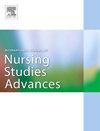新护士离职率及转型冲击与离职意向的关系:一项元分析
IF 3.1
Q1 NURSING
International Journal of Nursing Studies Advances
Pub Date : 2025-07-29
DOI:10.1016/j.ijnsa.2025.100390
引用次数: 0
摘要
背景:新护士的高流动率是一个全球性的问题。新护士是留住和防止护士短缺的劳动力。许多新护士在第一年的实践中经常经历过渡冲击,这与离开这个行业的更大意图相关。然而,对新护士并没有一个统一的定义,各种研究将新护士定义为工作一年、一到三年或长达五年的护士。从学术到临床实践的不成功过渡影响了护士的幸福感,患者护理质量和组织成本。目的:本研究旨在调查新护士离职倾向的发生率,并探讨过渡冲击与离职倾向的关系。方法:采用CINAHL、ProQuest、PubMed、Scopus、Science Direct、Academic Search等9个数据库,自成立至2024年10月进行系统评价和meta分析。使用JBI检查表评估研究质量,并使用随机效应模型估计合并患病率和效应大小。进行异质性、发表偏倚、亚组分析和敏感性分析。所有的统计分析均采用综合meta分析,版本4,R软件版本3.5.3。结果:我们对15项研究中的12项进行的荟萃分析发现,在8个国家的8593名新护士中,离职意向的患病率从6%到61%不等。合并患病率为36%(95%可信区间:27% ~ 46%,I2 ~ 98%),新护士的过渡休克与离职意向存在显著的中度关联(效应值0.489,95%可信区间为0.297 ~ 0.644,I2 ~ 97%)。结论:较高的离职意向患病率凸显了全球护理劳动力危机的重大挑战。研究结果显示,需要结构化的过渡方案,以减轻过渡冲击和减少离职意愿。护士和医院管理者应该尽快解决这个问题,提供更顺利的过渡,并实施早期职业支持,以稳定护理人员队伍。本文章由计算机程序翻译,如有差异,请以英文原文为准。
Turnover prevalence and the relationship between transition shock and turnover intention among new nurses: A meta-analysis
Background
: Higher turnover rates of new nurses is a global problem. New nurses are the workforce that retains and prevents the nursing shortage. Many new nurses often experience transition shock during their first year of practice, which correlates with a greater intention to leave the profession. However, there is no universal definition of new nurses, various studies define as nurses with one year, one to three year or up to five years of employment. The unsuccessful transition from academic into clinical practice affects the nurses’ well-being, the quality of patient care, and organizational costs.
Aims
: This review aims to examine the prevalence of turnover intention among new nurses and to identify the relationship between transition shock and turnover intention.
Methods
: A systematic review and meta-analysis were performed with nine databases searching CINAHL, ProQuest, PubMed, Scopus, Science Direct, Academic Search, etc., from inception to October 2024. The quality of studies was assessed using the JBI checklist, and a random effect model was used to estimate the pooled prevalence and effect size. Heterogeneity, publication bias, subgroup analysis and sensitivity analysis were conducted. All statistical analyses were conducted with Comprehensive Meta-Analysis, version 4 and R software version 3.5.3.
Results
: Our meta-analysis of 12 out of 15 studies found that the prevalence of turnover intention ranged from 6 %– 61 % of (8593) new nurses across eight countries. The pooled prevalence was 36 % (95 % confidence interval: 27 % to 46 %, I2 - 98 %), and a significant moderate association of transition shock of new nurses was found with turnover intention (effect size 0.489, 95 % confidence interval of 0.297 to 0.644, I2 - 97 %).
Conclusions
: The higher prevalence of turnover intention highlights a significant challenge for the global nursing workforce crisis. The findings revealed a need for structured transition programs to mitigate transition shock and diminish turnover intention. Nurse and hospital administrators should urgently address this by providing smoother transition and implementing early career support to stabilize nursing workforce.
求助全文
通过发布文献求助,成功后即可免费获取论文全文。
去求助
来源期刊

International Journal of Nursing Studies Advances
Nursing-General Nursing
CiteScore
5.80
自引率
0.00%
发文量
45
审稿时长
81 days
 求助内容:
求助内容: 应助结果提醒方式:
应助结果提醒方式:


